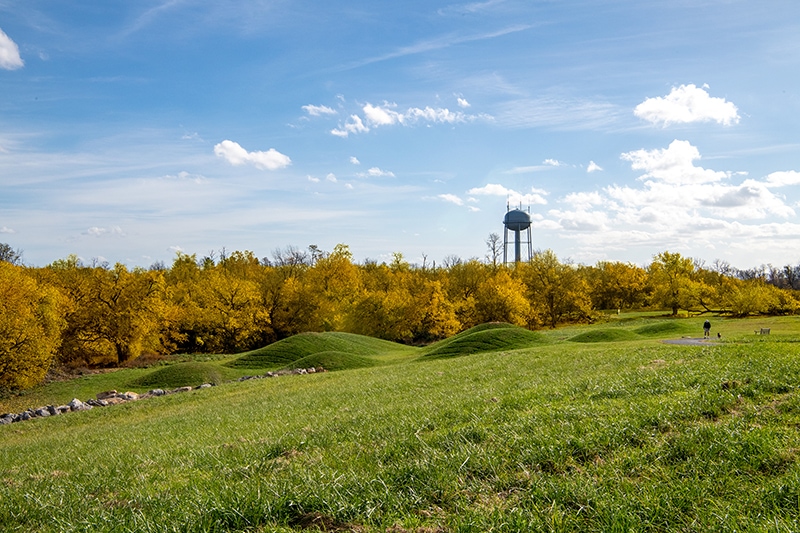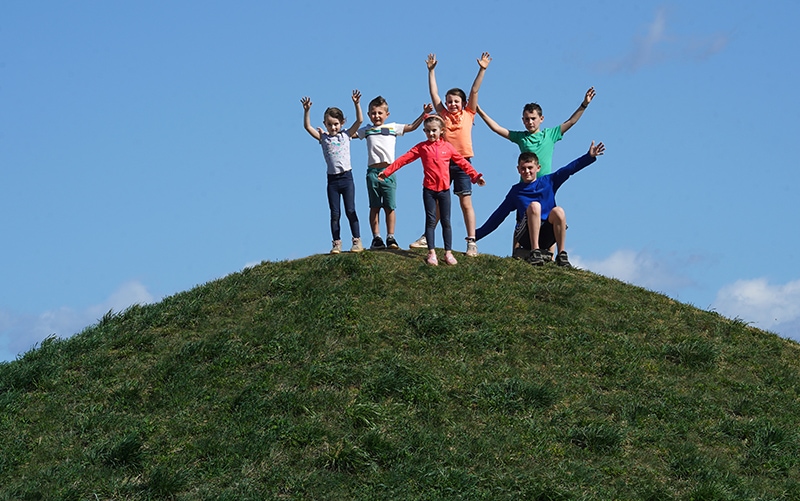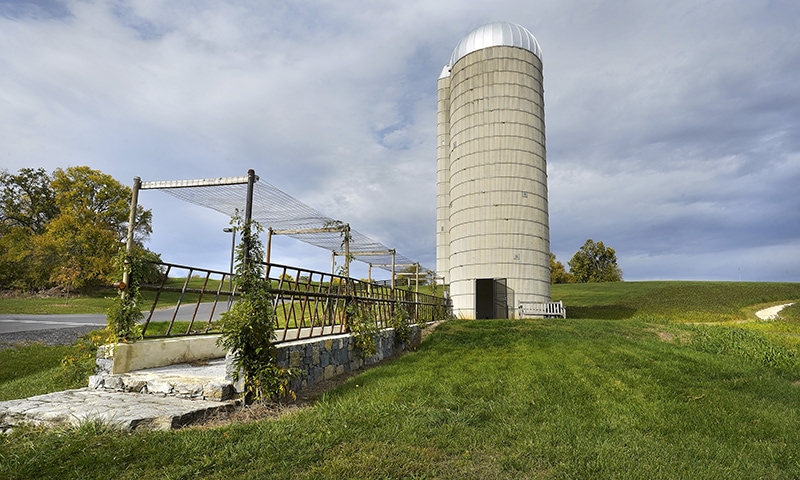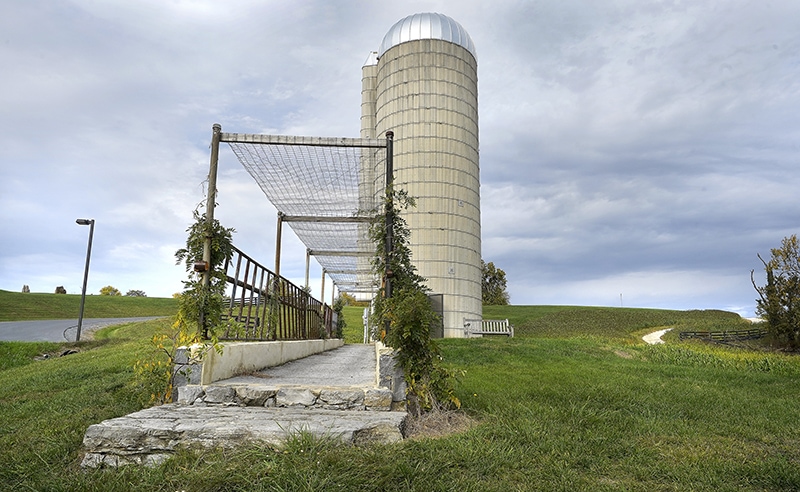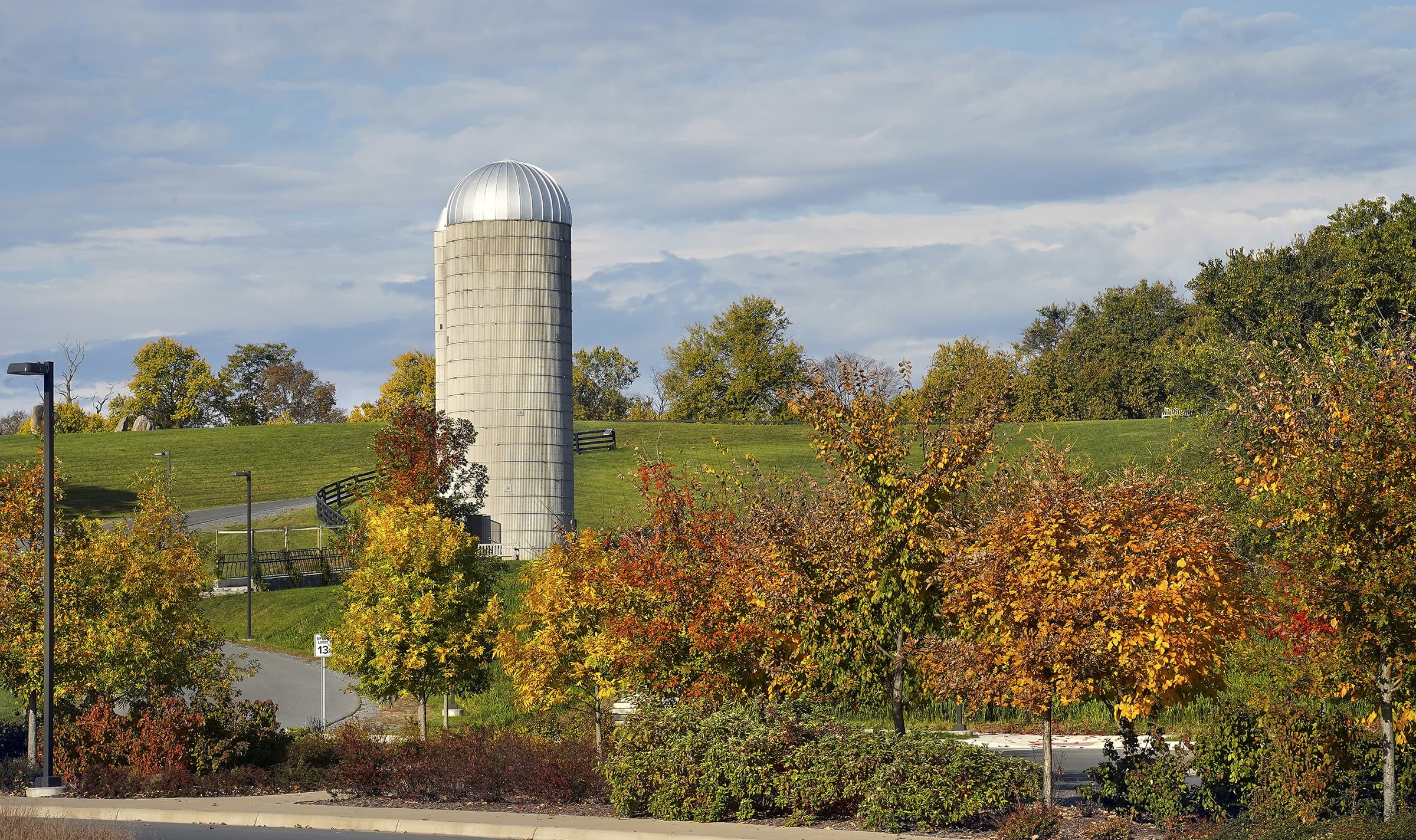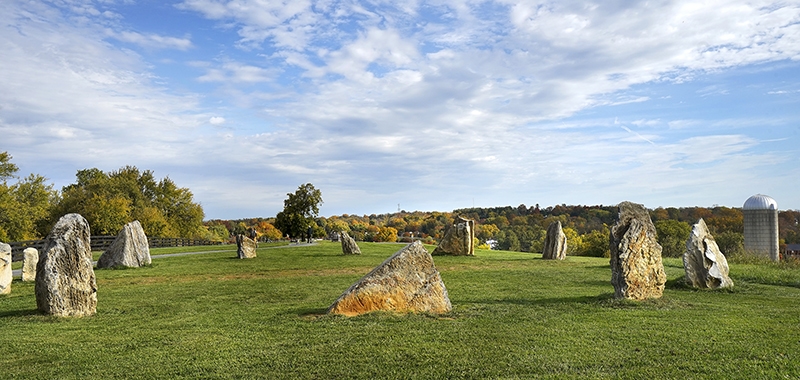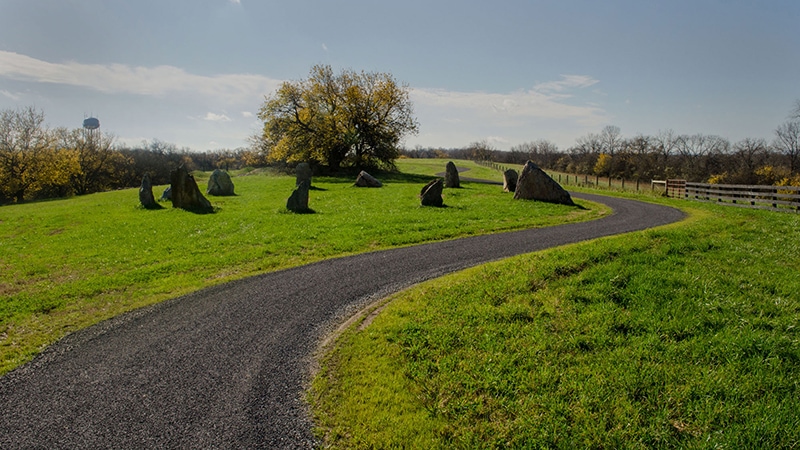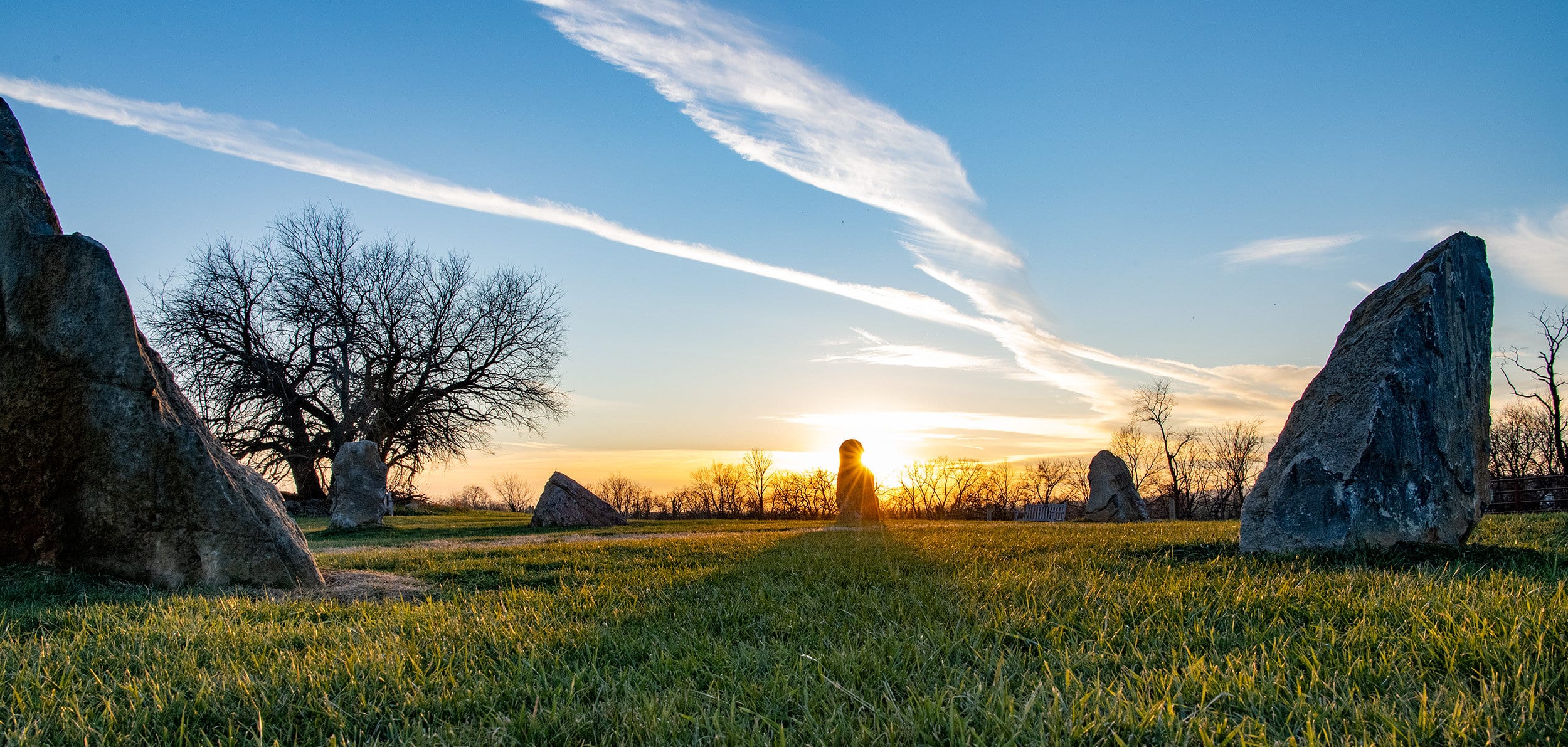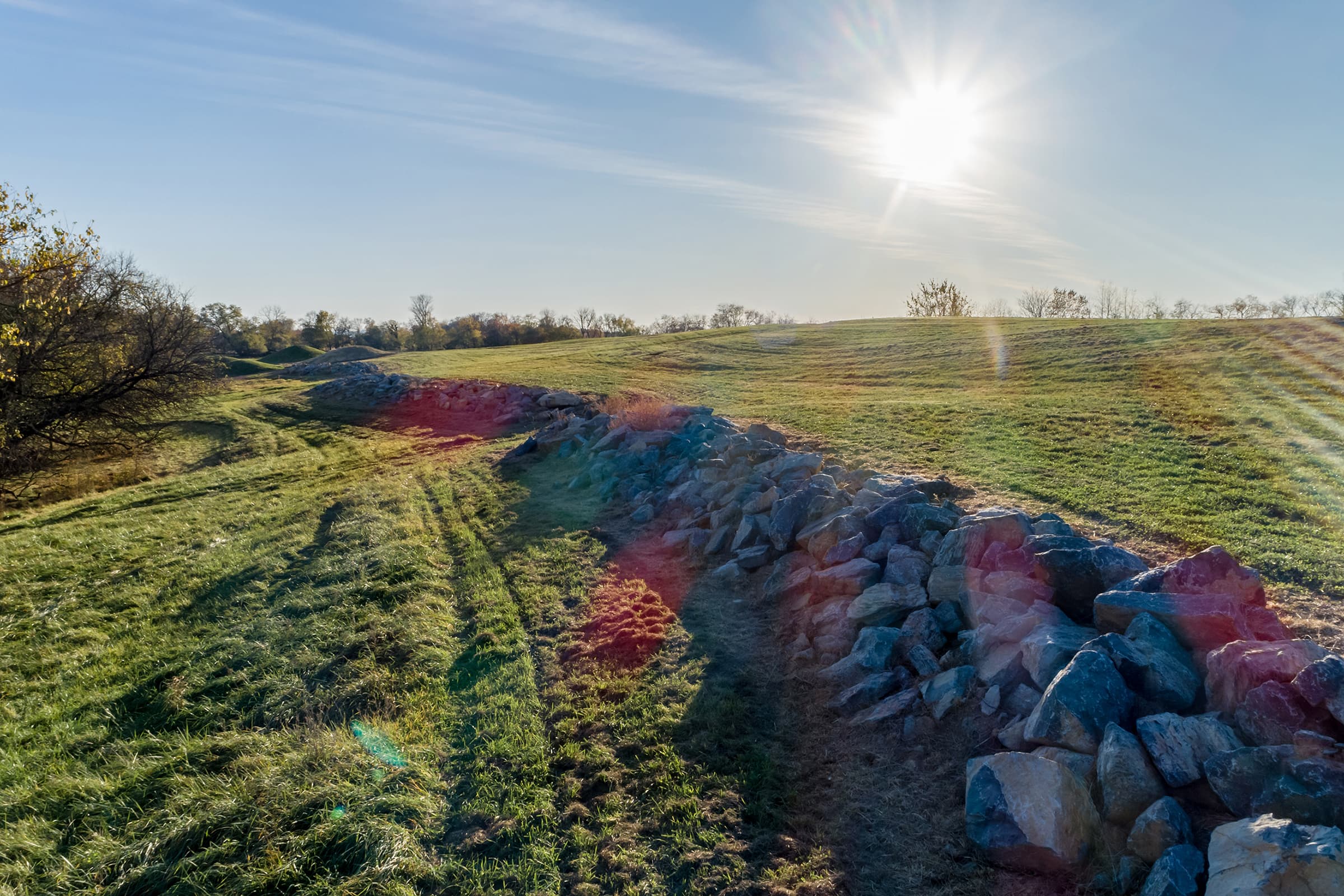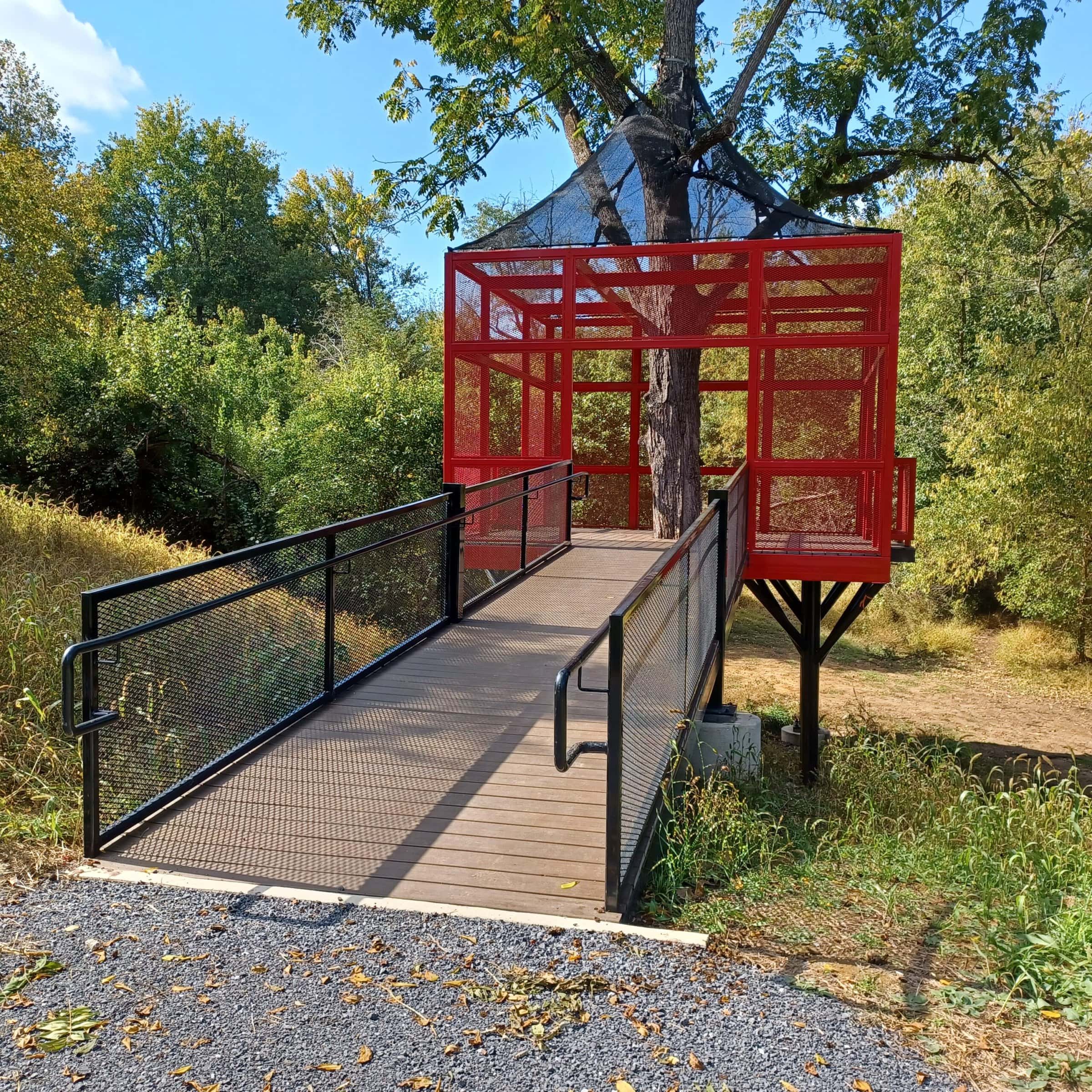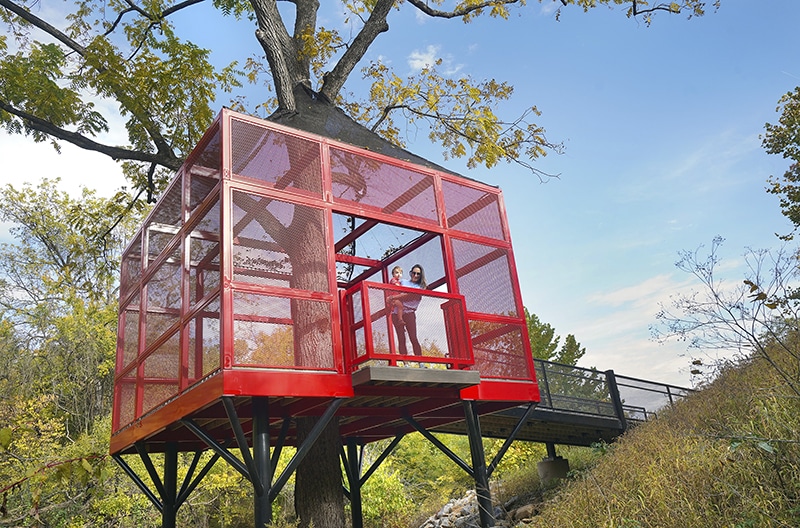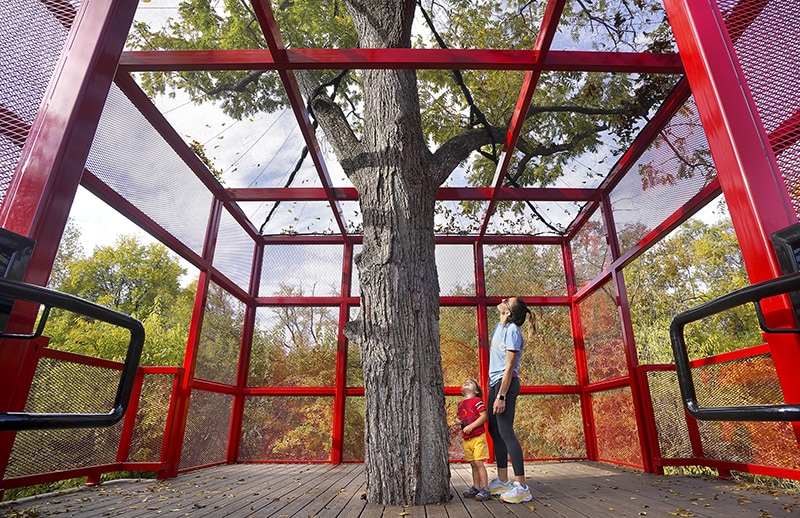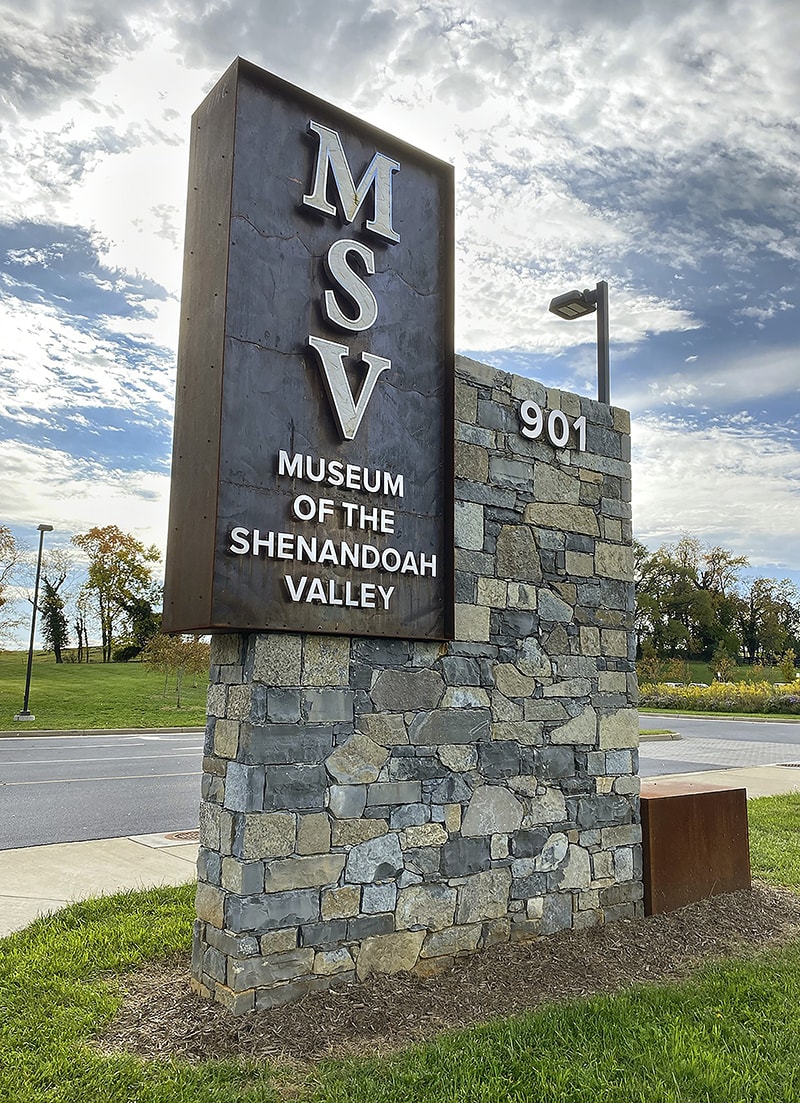Art on the Trails: Landscape Features
Along with art installations, engaging landscape features are part of The Trails at the MSV. Highlights include a standing stone circle, a fieldstone ha-ha (sunken stone fence), a grouping of 10 hills or “picnic mounds” ranging in height from 10 to 15 feet, an allée with 46 recently planted oak and hickory trees, a treehouse build around a walnut tree, and—near a renovated 1950s-era silo—a garden with seasonal plantings and an antique tractor.
Picnic Mounds
Just beyond the stone circle and ha-ha are “picnic mounds,” composed of rubble from the road excavation. Covered in turf, the mounds provide spots for picnics and play, and an interesting visual feature.
Corn Chute
This formerly functional addition to the Museum’s 1950s-era silo has been transformed into a site for plants and play. A stonemason added the stone facing, and MSV gardeners planted native wisteria that will eventually grow over the top and sides.
Silo
The silo, probably built in the 1950s, was completely refurbished in the spring/summer of 2019 by a crew specializing in silo renovation. Workers removed the interior silage equipment, scrubbed the exterior, lined the walls of the interior, and put on a new roof with a transparent oculus.
Standing Stone Circle
During the winter of 2018–2019, workers selected 12 of the largest and most interesting stones found on the Museum landscape during construction of The Trails at the MSV. The crew then marked out the location for a large circle at the top of the ridge near the road. Equipment operators placed and secured the stones in a circle overlooking the campus. The resulting stone circle resembles those you might find in Scotland or Ireland, though the stones are not knowingly aligned with sun or moon transits, or with the stars.
Fieldstone Ha-Ha
A “Ha-Ha” is a landscape design feature that creates a barrier while allowing for an unobstructed view. Unlike traditional ha-has built of finished stone or brick, the ha-ha at the MSV is made of fieldstone rubble. And unlike a fence or wall, the terrain on one side of a ha-ha is lower or recessed, while the ground on the other side is more or less even with the top of the ha-ha. Ha-has were a common feature in British landscape design.
Treehouse, 2023
Reader & Swartz Architects and Painter-Lewis, P.L.C., Engineering
Powder-coated steel
Given in memory of Dr. Peter Bullough by the Glass–Glen Burnie Foundation
Conceived as a red cage surrounding a tree, this treehouse allows guests to interact with nature in ways they couldn’t while standing on the ground. Strong enough to be filled with people, the treehouse is a room in the air where guests can come together. The red color and the geometry of the structure contrast with the natural forms of the trees in and around it. Rising up through the middle is a black walnut tree. A black mesh pyramid atop the “cage” protects visitors from falling walnuts in the autumn. The red cube is supported by black structural “trees” below, imbedded in the ground to avoid the walnut tree’s roots. The treehouse was given in memory of Peter Bullough, longtime Museum trustee and friend of MSV benefactor Julian Wood Glass Jr. Bullough loved simple, geometric forms that he imagined might be altered by the people experiencing them.
MSV Entrance Sign, 2020
Richard Lew (sculptor) and Ben Smallwood (stonemason)
The entrance sign combines a metal rectangle bearing the institution’s title with a stone wall reminiscent of the stone walls seen throughout the campus. As the piece is positioned along Amherst St., there were restrictions regarding size, footprint, and setting from the street, dictating the proportions and siting. The sign was installed in February 2020.
The Trails at the MSV is a 90-acre art park on the grounds of the Museum of the Shenandoah Valley. Notable sculpture, art installations, and landscape features are highlighted on the Trails map.
A free admission-art park, The Trails at the MSV is open daily from 7 a.m. to dusk.
